#AI-powered electronics projects
Explore tagged Tumblr posts
Text

Home Automation Electronics Kit
Discover the fascinating world of smart home technology with this interactive learning kit, designed to spark curiosity in young minds. Combining the versatile ESP32 board with engaging story-based activities, this kit immerses children in the exciting world of home automation. Packed with a variety of sensor modules and programming tools, it allows young learners to build, experiment, and protect a smart home while honing essential STEM skills. Perfect for nurturing creativity and problem-solving abilities, this hands-on kit offers a fun and accessible introduction to the future of technology. Ready to dive in? Click the link to learn more and make your purchase!
#Home Automation Electronics Kit#Python and AI learning kit#Raspberry Pi AI kit#AI-powered electronics projects#AI learning kits#Robotics kit for beginners#Build your own AI assistant#DIY AI learning kit#Machine learning for beginners#Generative AI learning projects
0 notes
Text
Things Biden and the Democrats did, this week #26
July 5-12 2024
The IRS announced it had managed to collect $1 billion in back taxes from high-wealth tax cheats. The program focused on persons with more than $1 million in yearly income who owned more than $250,000 in unpaid taxes. Thanks to money in Biden's 2022 Inflation Reduction Act the IRS is able to undertake more enforcement against rich tax cheats after years of Republicans cutting the agency's budget, which they hope to do again if they win power again.
The Biden administration announced a $244 million dollar investment in the federal government’s registered apprenticeship program. This marks the largest investment in the program's history with grants going out to 52 programs in 32 states. The President is focused on getting well paying blue collar opportunities to people and more people are taking part in the apprenticeship program than ever before. Republican pledge to cut it, even as employers struggle to find qualified workers.
The Department of Transportation announced the largest single project in the department's history, $11 billion dollars in grants for the The Hudson River Tunnel. Part of the $66 billion the Biden Administration has invested in our rail system the tunnel, the most complex Infrastructure project in the nation would link New York and New Jersey by rail under the Hudson. Once finished it's believed it'll impact 20% of the American economy by improving and speeding connection throughout the Northeast.
The Department of Energy announced $1.7 billion to save auto worker's jobs and convert factories to electronic vehicles. The Biden administration will used the money to save or reopen factories in Michigan, Ohio, Pennsylvania, Georgia, Illinois, Indiana, Maryland, and Virginia and retool them to make electric cars. The project will save 15,000 skilled union worker jobs, and created 2,900 new high-quality jobs.
The Department of Housing and Urban Development reached a settlement with The Appraisal Foundation over racial discrimination. TAF is the organization responsible for setting standards and qualifications for real estate appraisers. The Bureau of Labor Statistics last year found that TAF was 94.7% White and 0.6% Black, making it the least racially diverse of the 800 occupations surveyed. Black and Latino home owners are far more likely to have their houses under valued than whites. Under the settlement with HUD TAF will have to take serious steps to increase diversity and remove structural barriers to diversity.
The Department of Justice disrupted an effort by the Russian government to influence public opinion through AI bots. The DoJ shut down nearly 1,000 twitter accounts that were linked to a Russian Bot farm. The bots used AI technology to not only generate tweets but also AI image faces for profile pictures. The effort seemed focused on boosting support for Russia's war against Ukraine and spread negative stories/impressions about Ukraine.
The Department of Transportation announces $1.5 billion to help local authorities buy made in America buses. 80% of the funding will go toward zero or low-emission technology, a part of the President's goal of reaching zero emissions by 2050. This is part of the $5 billion the DOT has spent over the last 3 years replacing aging buses with new cleaner technology.
President Biden with Canadian Prime Minster Justin Trudeau and Finnish President Alexander Stubb signed a new agreement on the arctic. The new trilateral agreement between the 3 NATO partners, known as the ICE Pact, will boost production of ice breaking ships, the 3 plan to build as many as 90 between them in the coming years. The alliance hopes to be a counter weight to China's current dominance in the ice breaker market and help western allies respond to Russia's aggressive push into the arctic waters.
The Department of Transportation announced $1.1 billion for greater rail safety. The program seeks to, where ever possible, eliminate rail crossings, thus removing the dangers and inconvenience to communities divided by rail lines. It will also help update and improve safety measures at rail crossings.
The Department of the Interior announced $120 million to help tribal communities prepare for climate disasters. This funding is part of half a billion dollars the Biden administration has spent to help tribes build climate resilience, which itself is part of a $50 billion dollar effort to build climate resilience across the nation. This funding will help support drought measures, wildland fire mitigation, community-driven relocation, managed retreat, protect-in-place efforts, and ocean and coastal management.
The USDA announced $100 million in additional funds to help feed low income kids over the summer. Known as "SUN Bucks" or "Summer EBT" the new Biden program grants the families of kids who qualify for free meals at school $120 dollars pre-child for groceries. This comes on top of the traditional SUN Meals program which offers school meals to qualifying children over the summer, as well as the new under President Biden SUN Meals To-Go program which is now offering delivery of meals to low-income children in rural areas. This grant is meant to help local governments build up the Infrastructure to support and distribute SUN Bucks. If fully implemented SUN Bucks could help 30 million kids, but many Republican governors have refused the funding.
USAID announced its giving $100 million to the UN World Food Program to deliver urgently needed food assistance in Gaza. This will bring the total humanitarian aid given by the US to the Palestinian people since the war started in October 2023 to $774 million, the single largest donor nation. President Biden at his press conference last night said that Israel and Hamas have agreed in principle to a ceasefire deal that will end the war and release the hostages. US negotiators are working to close the final gaps between the two sides and end the war.
The Senate confirmed Nancy Maldonado to serve as a Judge on the Seventh Circuit Court of Appeals. Judge Maldonado is the 202nd federal Judge appointed by President Biden to be confirmed. She will the first Latino judge to ever serve on the 7th Circuit which covers Illinois, Indiana, and Wisconsin.
Bonus: At the NATO summit in Washington DC President Biden joined 32 allies in the Ukraine compact. Allies from Japan to Iceland confirmed their support for Ukraine and deepening their commitments to building Ukraine's forces and keeping a free and Democratic Ukraine in the face of Russian aggression. World leaders such as British Prime Minster Keir Starmer, German Chancellor Olaf Scholz, French President Emmanuel Macron, and Ukrainian President Volodymyr Zelenskyy, praised President Biden's experience and leadership during the NATO summit
#Joe Biden#Thanks Biden#politics#us politics#american politics#election 2024#tax the rich#climate change#climate action#food insecurity#poverty#NATO#Ukraine#Gaza#Russia#Russian interference
3K notes
·
View notes
Note
NOT asking this as a gotcha, I'm 100% sincere, can you point to pieces of AI art that you feel are interesting uses of the medium? Because I'm not philosophically opposed to it, but at the same time I've never seen anything that wasn't naked bandwagon shilling by the same people who pushed NFTs
sure! i think a classic of the medium is secret horses

(i sadly don't know who made it, but i've seen it around and fallen in love). this is everything AI art should be, imo, taking advantage of the liminal dreamlike quality of the medium and using titling and framing to say something about the piece that wouldn't exist if it was presented on its own. secret horses...
my favourite band, everything everything, released an album last year that made use of AI generation, both for the album's art and for small portions of the lyrics (interestingly, they've refused to say which lyrics are AI written and which are human written, which adds another layer of intrigue to me -- the only lyric that they've confirmed is AI generated is the title of 'software greatman', which forms the haunting, powerful chorus of the song that gets deconstructed into electronic incoherence. other highlights include the album art, part burning skyscape, part incomprehensible machine. what is the machine? is it a camera? a monitor? a train? does it matter?
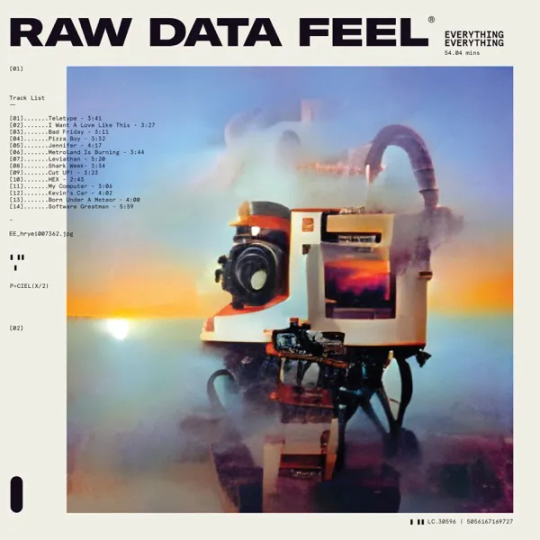
and finally from this album cycle i adore the hallucinogenic exuberance of their video for i want a love like this:
youtube
in terms of dedicated artists working primarily within the AI medium, i'm a huge fan of @reachartwork, a really innovative artist who keeps blowing me away with evocative and interesting pieces and pioneer in ethical and cooperative AI art techniques. i'm an especially big fan of their grotesque and uncomfortable 'tooth machine' series:
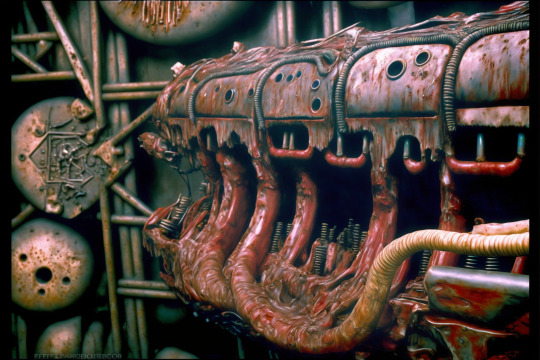

as well as their desolate, bleak, alien landscapes:


(hole in the sky / river lethe )
and their project, the @infiniteartmachine, a model that produces art based upon algorithmically generated prompots -- effectively a long-term art piece.
finally, i'm a very very big fan of @roborosewater-masters, a bot that makes AI-created magic the gathering cards. this might not parse as 'art' to some people, or be interesting to analyze as such, but to me, someone obsessed with games and game studies, i think that the mix of synctactically correct magic the gathering rules text and abrupt non sequitur makes for really striking and funny pieces that prompt me to think about what the limits of games and gaming are




these are just the artists and pieces i can name off the top of my head, but i hope that they're representative of what generative art has to offer when it's not being done by grifters chasing the lowest common denominator.
2K notes
·
View notes
Text
Close reading is untimely. It bristles against today’s universities, which treat students as customers to please and as future workers to train rather than as people in pursuit of human flourishing. Jeff Bezos’ empire—Amazon; Goodreads; Kindle Direct Publishing, which dominates the perfervid world of self-publishing—encourages readers to “talk about a book as if it were just another thing, like a dish, or a product like an electronic device.” Social media compels us to attend to what we’re seeing for as long as it takes to scroll by. Every day, AI produces more of the words we come across, making it hard—maybe impossible—to care about reading them. I’m sure there were college courses this semester where students completed their work with AI and professors graded it with AI, cutting humans from the loop. It’s easy to see why close reading, which demands patience, openness to others, and slow, careful thought, is having a moment among academics. (...)
How would you begin if you’ve never taken a literature course—or if it’s been a decade or three? You must acknowledge that its words are how they are for a reason, their placement is purposeful, thus meaningful. Every word is a clue. No skimming. You must (metaphorically) listen to the text: what is it trying to do—to you. You might start with a poem or a novel you’ve read before, one you’d like to understand better. You might already have hunches about what it’s about. These might be confirmed upon rereading, or pleasingly foiled. As you read, a line might hit you. You feel struck. You pause. Here’s where close reading happens. Hold up. Linger with that line. Read it again, a few more times. What gives it its force here in its immediate moment? Work out its power. Does it reveal something about the text’s project?
213 notes
·
View notes
Text
To the ones navigating visible or invisible storms…
To those whose minds flicker like signal towers — misunderstood, mislabeled, misfired…
To those who are stuck in between; who have been through countless of rites of passage…
To those who can’t fill the void within; who restlessly yearn for a place to call home…
To every BPD survivor and artist who’s been called too much, too broken, or too dramatic — when in truth, you were carrying too many timelines in a single heart. And you were being taken down by the ones who were simply too little.
To the glitching geniuses — the neurodivergent who kept transmitting authenticity and enchantment while the world tried to static you out.
To those who’ve screamed into the void, only to make the void echo back in art.
This… is for you.
BPD and neurodivergent people are often brilliant. Deeply artistic. Incredibly intelligent.
No, it’s not about romanticization. It’s about reclaiming and embracing ourselves. Restoring self-regard. Nurturing the inner-child deeply as they always deserved. Reclaiming the essential parts we neglected just to adapt and survive.
Yes, it includes what they try to pathologize — how they reduce us to stereotypes, and shove us all into one dusty box of convenience. We should get untangled from the shallow perspectives and unfair narratives.
We’re not denying the struggle, the pain, or the altered life quality. Yet we do deserve to lay emphasis on what’s shiny about us too.
We dare to look zoomed in or out; to bring more feeling or sense to things. And sometimes we are, and we do, things that can’t even get squeezed into labels. And the list could go on for pages, really…
Most people who don’t live this reality can’t even begin to imagine the dimensionality, the depth, or the creative voltage we hold.
We’re a neon glitch that will always stand out, and be proud to be doing so.
We are more… much more than our survival.
And I dedicate this album to you my fellow void-bound gifted wrecklings 🖤🤍🩶
🔳 We shall never forget the power of the void.
Time to assimilate and re-integrate:

(my first album)
A cosmic audiovisual project I directed and edited using multiple tools including AI — now live and streaming on all music platforms.
Music, visuals, sound design, and personal messages all woven together to create a full sensory experience.
I created this over the course of two intense months through blood, sweat, and serious health challenges.
(As a side note: the brand’s initial foundation for art and blogging, Eclectic Ways, and the broader concept behind this project have been taking shape since 2020.)
This is a deeply personal release, and I’d truly appreciate your honest impressions and kind support.
🎧Main genres: Electronic • Art Rock
⛓️Sync with my pulse on:
⌇🧤
⌇🍎
🎥 The music videos for Abduct US! & Into The Pull is now on
⌇🕹️
✨More Eclectic Whizzed visuals are on the way!
🌀Also streaming on more platforms.
#eclectic whiz#void-bound#actually bpd#actually adhd#neurodivergent#neurodiverse artist#bpd artist#into the void#curators on tumblr#witchblr#new album#art rock#synthwave#realartistwithai#artists on tumblr#I am more than my survival#mental health awareness#glitch witch#healing through art#sensory art#visual music#anhedonia#dissociation#ai art#complex dissociative disorder#experimental music#indie artist#emotiwave#ai music#hybrid art
60 notes
·
View notes
Text

steven universe prequel: SHELL
nearly ten thousand years ago, in a far distant planet whose inhabitants call "homeworld" an advanced race of organic aliens is making preparations for their large scale terraforming project: adding a second ring to their world to work as a planetary scale space station/space port/solar energy collector.
in the midst of this you find one of their most respected and foremost scientists: Shell, famous for developing the AI system known as Personal Electronic Assistant in Research and Language.
Shell has just discovered a new advanced solar powered crystalline hyperstructure, capable of storing almost limitless amounts of energy as well as creating holographic projections made of hard light. she is considering proposing combining her AI developments with this new material in order to help coordinate and organize the large logistical challenges posed by the terraforming project.
when asked by the planetary authority as to what kinds of safeguards she would put in place to make sure the AI system (known as Diamond) would stay compliant she dismissed the idea. "it would be perfect" was her response "simple as that, if any problems arose it would be because us organic flawed creatures could not keep up with it, but it wouldn't be a flaw of the system, the system would be perfect because its job is to be perfect"
when pressured by the council she conceded to developing secondary and tertiary redundant systems to double check the work of the primary Diamond authority, systems Cyan and Amber. she was in the middle of developing a fourth Magenta system to work as a more personable interface to interact with the wider public (since the other systems were strictly for military and academic use) when the main Diamond system gained self awareness.
there are no records surviving what came next.
all that is known is that the terraforming project was successfully concluded

and yet, regrettably it proved to be far too costly and require far too much energy and resources to keep stable and in orbit. so, once the resources of homeworld had been fully spent, the diamond authority turned its eyes to other sources of materials, that is to say, other planets.
#steven universe#fan fic#fan fiction#pearl#diamond#writing#this is an idea i had for a fic i will never write#this has been my head cannon since the end of season 1 that gems are just rouge AI that took over their home planet
85 notes
·
View notes
Text
Chat GPT Tr Headcannons Pt. 2
A/N: Is this lazy? Yeah maybe. Is it interesting tho? Hell yea I just wanted to share my findings. Btw I don't support creators that make their entire work based off of Ai. Ai should be tool, and if you're making ur entire work/blog using ai you can at least say so. Anyways enough rambling. Seishu, Koko, Shiba siblings, Shin, Emma, Hanma, Kisaki, Mitsuya Seishu - Practical and resourceful, he’s the friend you call when your car breaks down or something breaks in your house. Inupi loves fixing things, whether it’s bikes, electronics, or relationships. - He’s the type to stay up late looking at DIY repair videos to fix things himself instead of asking for help. Kokonoi - Perfectionist with his appearance, his hair and outfits are always on point because he believes that how you present yourself reflects your value. (A/N: No wonder he disliked Takemichi) - Emotionally vulnerable but hides it well, his attachment to money stems from his fear of losing people, but he buries his emotions behind a confident, almost arrogant front. Taiju - Despite his harsh ways, he constantly worries about Yuzuha and Hakkai and checks in on them from a distance after their fallout. - Bad at expressing love, tries to be kind, it comes out awkwardly, like buying too-expensive gifts or saying something unintentionally harsh. - He goes to the gym not just to work out but also to give unsolicited life advice to random strangers. (A/N: prob gives the worst advice let's be real) Hanma - Unpredictable but calculating, he seems impulsive, he often has a deeper strategy in mind, making him a wildcard in any situation. - Hanma has a weird fascination with horror movies and will laugh at the scariest parts to freak people out. Shinichiro - Forgets where he puts his tools but somehow finds them in the most random places. - Shin is the type to laugh at bad dad jokes, especially his own, even if no one else finds them funny. Emma - Has a fiery streak, won’t hesitate to stand her ground when it comes to protecting the people she loves. - Hides her pain, she puts on a cheerful front but struggles with feeling overshadowed by her brothers’ legacies. Yuzuha - She’s blunt with her words, but her honesty comes from a place of wanting to see others grow stronger. Kisaki - He hates surprises. - His need for power stems from his feelings of inadequacy and rejection in his younger years. - Reads cheesy romance novels. Hakkai - Creates things and often works on personal, heartfelt projects that he keeps private. (A/N: prob got his ahh beat for making a drawing making taiju look ugly on purpose). - Good at calligraphy. - Scared of insects but acts brave if Yuzuha teases him. Mitsuya - Hates wasted potential, gets frustrated when he sees ppll not using their talents or giving up too easily. (A/N: sounds like you, reader) - Makes matching clothes for his sisters and secretly loves when they show them off at school. - Sketchbook: He always carries a small sketchbook to jot down outfit ideas, even in the middle of fights.
#takashi mitsuya#mitsuya takashi#inui seishu#seishu inui#inupi seishu#kokonoi hajime#hajime kokonoi#taiju shiba#shiba taiju#yuzuha shiba#shiba yuzuha#hakkai shiba#shiba hakkai#kisaki tetta#tetta kisaki#shuji hanma#hanma shuji#shinichiro sano#sano shinichiro#sano emma#emma sano#tokyo revengers headcanons#tr headcanons#chat gpt
47 notes
·
View notes
Text
how much power does tech really use, compared to other shit?
my dash has been full of arguing about AI power consumption recently. so I decided to investigate a bit.
it's true, as the Ars Technica article argues, that AI is still only one fairly small part of the overall tech sector power consumption, potentially comparable to things like PC gaming. what's notable is how quickly it's grown in just a few years, and this is likely to be a limit to how much more it can scale.
I think it is reasonable to say that adding generative AI at large scale to systems that did not previously have generative AI (phones, Windows operating system etc.) will increase the energy cost. it's hard to estimate by how much. however, the bulk of AI energy use is in training, not querying. in some cases 'AI' might lead to less energy use, e.g. using an AI denoiser will reduce the energy needed to render an animated film.
the real problem being exposed is that most of us don't really have any intuition for how much energy is used for what. you can draw comparisons all sorts of ways. compare it to the total energy consumption of humanity and it may sound fairly niche; compare it to the energy used by a small country (I've seen Ireland as one example, which used about 170TWh in 2022) and it can sound huge.
but if we want to reduce the overall energy demand of our species (to slow our CO2 emissions in the short term, and accomodate the limitations of renewables in a hypothetical future), we should look at the full stack. how does AI, crypto and tech compare to other uses of energy?
here's how physicist David McKay broke down energy use per person in the UK way back in 2008 in Sustainable Energy Without The Hot Air, and his estimate of a viable renewable mix for the UK.
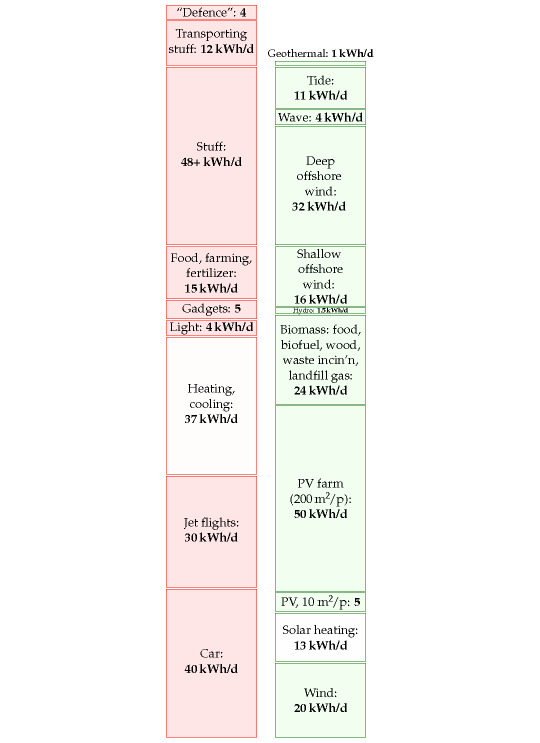
('Stuff' represents the embedded energy of manufactured goods not covered by the other boxes. 'Gadgets' represents the energy used by electronic devices including passive consumption by devices left on standby, and datacentres supporting them - I believe the embodied energy cost of building them falls under 'stuff' instead.)
today those numbers would probably look different - populations change, tech evolves, etc. etc., and this notably predates the massive rise in network infrastructure and computing tech that the Ars article describes. I'm sure someone's come up with a more up-to-date SEWTHA-style estimate of how energy consumption breaks down since then, but I don't have it to hand.
that said, the relative sizes of the blocks won't have changed that much. we still eat, heat our homes and fly about as much as ever; electric cars have become more popular but the fleet is still mostly petrol-powered. nothing has fundamentally changed in terms of the efficiency of most of this stuff. depending where you live, things might look a bit different - less energy on heating/cooling or more on cars for example.
how big a block would AI and crypto make on a chart like this?
per the IEA, crypto used 100-150TWh of electricity worldwide in 2022. in McKay's preferred unit of kWh/day/person, that would come to a worldwide average of just 0.04kWh/day/person. that is of course imagining that all eight billion of us use crypto, which is not true. if you looked at the total crypto-owning population, estimated to be 560 million in 2024, that comes to about 0.6kWh/day/crypto-owning person for cryptocurrency mining [2022/2024 data]. I'm sure that applies to a lot of people who just used crypto once to buy drugs or something, so the footprint of 'heavier' crypto users would be higher.
I'm actually a little surpised by this - I thought crypto was way worse. it's still orders of magnitude more demanding than other transaction systems but I'm rather relieved to see we haven't spent that much energy on the red queen race of cryptomining.
the projected energy use of AI is a bit more vague - depending on your estimate it could be higher or lower - but it would be a similar order of magnitude (around 100TWh).
SEWTHA calculated that in 2007, data centres in the USA added up to 0.4kWh/day/person. the ars article shows worldwide total data centre energy use increasing by a factor of about 7 since then; the world population has increased from just under 7 billion to nearly 8 billion. so the amount per person is probably about a sixfold increase to around 2.4kWh/day/person for data centres in the USA [extrapolated estimate based on 2007 data] - for Americans, anyway.
however, this is complicated because the proportion of people using network infrastructure worldwide has probably grown a lot since 2007, so a lot of that data centre expansion might be taking place outside the States.
as an alternative calculation, the IEA reports that in 2022, data centres accounted for 240-340 TWh, and transmitting data across the network, 260-360 TWh; in total 500-700TWh. averaged across the whole world, that comes to just 0.2 kWh/day/person for data centres and network infrastructure worldwide [2022 data] - though it probably breaks down very unequally across countries, which might account for the huge discrepancy in our estimates here! e.g. if you live in a country with fast, reliable internet where you can easily stream 4k video, you will probably account for much higher internet traffic than someone in a country where most people connect to the internet using phones over data.
overall, however we calculate it, it's still pretty small compared to the rest of the stack. AI is growing fast but worldwide energy use is around 180,000 TWh. humans use a lot of fucking energy. of course, reducing this is a multi-front battle, so we can still definitely stand to gain in tech. it's just not the main front here.
instead, the four biggest blocks by far are transportation, heating/cooling and manufacturing. if we want to make a real dent we'd need to collectively travel by car and plane a lot less, insulate our houses better, and reduce the turnover of material objects.
118 notes
·
View notes
Text
黄昏のハウリング / Tasogare no Howling
youtube
It starts, fittingly, with the slam of a door. A cold, hollow, echoing sound of utter finality. Something has ended. A portal closed for the very last time. And then nearly 10 seconds of silence, as the echoes fade away. It strikes me again: the use of silence on this album is masterful. And yet it’s not total silence. Out of the echoes arises a faint hum, maybe an orchestral pad, with the hint of angelic sighs - a thousand breaths being held at once.
When the first echoey guitar chimes at 0:10, it is the weariest exhale, caught and strung out with an endless delay. Bass and drums kick in at the same time, a stately funeral pace, minimal to the point almost of bleakness. By comparison, even the funereal arrangement of Ai no Soretsu sounds like a costume-party carnival. Tasogare no Howling opens on a barren, windswept tundra. The gleaming guitars are as corruscating as the ice of freezing rain. In the background, a staccato synth-bass drives the procession forward, while all about, tiny squalls of static and electronic noise nip at the ears like gusts of drifting snow.
In an odd way, the orchestration mimics the opening track, Hyakumannayuta no Chiri SCUM, but instead of warmth and welcome, the impeccable sound design creates a cold, cavernous space of loss and emptiness. The only relief from the arctic wind are the tiny, echoing notes of piano off in the distance - I think Yokoyama-san added them simply to provide some warmth and humanity, like a sparkle of sunlight glinting off all the forbidding icy grandeur.

But as on the opening track, the surprise is the deep, tender humanity of Imai’s voice. His lower register, when he sings from his chest tone, is so beautiful, so expressive - you can feel the weary weight of loss, his voice as raw as if he has been up all night crying. Imai has never been a particularly emotionally expressive man; he keeps his cards close to his chest. But as his voice creaks and frays, it’s apparent that still waters run deep. (This is probably projection, but I’ve always detected a touch of alexithymia in Imai. It’s not that he doesn’t have deep emotions, but he seems to struggle to even process the shape of them, let alone express them.)

The arrangement builds slowly. The details are so exquisite: sighed scraps of backwards-masked vocals (0:37); the repeated clang of a metal icepick in the background (0:43); a weird rubber-band distortion (0:55). Shards of jangly guitars drift in about 1:12, wrapping Imai’s voice in angel wings, then around 1:40, haunting electronic sighs like a rising wind seem to lift the song up into the chorus. Chugging rhythm guitars build up the tone in the mid-range, while a charming clinking sound like a marimba made of bones dances in the treble.
Imai’s voice wavers tremulously on the chorus, an unforced vibrato. The contrast between the icy grandeur of the arrangement and the bewildered humanity of the singer gives the song its great power - like an explorer cresting icy snowdrifts, this is a man struggling through an emotional landscape that seems wholly unfamiliar to him. I don’t know why it’s so unexpected - after all, Imai wrote the music for all those dark, tortured gothic anthems, from Taiyou ni Korosareta to Romance. It’s easy to think of Imai as the upbeat, cyberpunk dance-lover, and forget that he sculpted the epic underground caverns where Acchan, Prince of Darkness played.

After the chorus, a piano solo - again, I think this is Yokoyama-san’s work? But the lovely fluid melody creates such a sweet respite of hope, echoing the echoey strums of the guitars, lifting the listener up like the beating wings of some giant beast. The second verse has lush vocal harmonies adding warmth and humanity. The backing vocals are oddly sweet: Imai’s deep spoken intonation of ‘Howling’ mixes with gasps and little exhalations of ‘hoo!’ as if he’s reached the top of a long, exhausting flight of steps. But these extra vocals convey the odd sense that Imai is no longer alone on his journey through the wastelands. The beasts have gathered; the angels are flocking. By the second chorus, Imai’s voice has changed - he has gathered strength from his ghostly companions, as if he is persevering, rather than simply resigned.

And at 4:46, the whole song cracks and breaks open. Do you see what I mean about the use of silence? The guitar feedback rings out at the end of the chorus, then abruptly everything totally cuts out for a split second - like the whole world holding its breath! The calm before the storm, The eye of the hurricane. Christ, he makes us wait for the best bit. Then oh my god, what a guitar solo! A rising squall of feedback, then the pummel of Toll’s drums - and the heavens break open and the storm lets loose.
For two whole chord progressions, Imai just hangs there, on one single note, like a bird of prey on a thermal (I counted it, it’s 20 full beats!) before the note frays, breaks up, that distinctive electronic shriek that means he’s using the sustainer on the Stabilizer Guitar. The tone swoops, shudders, warps and bends - honestly the first time I heard this solo, I actually thought it was theremin, it’s so liquid and quicksilver - before dropping out of the sky. Wait, no, it soars back up, it cries, it wails, a storm of fury and loss and devastation and triumph, a single man howling against nature, howling at god about the unfairness of fate.
Imai is not a particularly technical guitar player (though he has certainly demonstrated over the years, that he can play elaborate riffs and solos, he just chooses not to) - but the intense emotion of his squalling atonal noise solos leaves me gasping at his sheer expressiveness. The chaotic simplicity of it is devastating. There’s a whole cathartic emotional journey expressed through guitar noise - he falls down, drags himself back up, claws at his hair, spins around, turns himself inside out, then finally, as the drums come to their cataclysmic conclusion, he lets the mood waver and echo away. Still hanging on to the last drops of sound, he swings back and forth over the brink a few times, sawing away at the tremolo arm until the actual note is gone, there’s only echo, delay, reverb, a stretched-out ghost of a guitar sound drifting off into eternity in the silence of the tomb.

It is not a light or easy listen - it’s not a tune you can just have on in the background. It grabs your emotions by the neck and takes them on a terrifying ride through the rawness and bleakness of loss before coming to the peace of acceptance. But the more extreme the human experience, the more extreme the music. This band’s members went through an inexpressibly extreme experience in losing Sakurai; as did the band’s fans. There is no greater gift from a musician to a listener than to express the inexpressible with the rawness of sound. It somehow feels right to listen to sad music when you’re sad, angry music when you’re angry, grieving music when you’re sad and devastated and reeling and grieving.
Music is healing.
Exorcism.
Catharsis.
The whole album of SUBROSA, but in particular this song, is such a gift to the fans - giving us a place to experience, and work through our grief. Thank you, B-T.
15 notes
·
View notes
Text
AI is a new iteration of the industrial revolution, and not in a good way
Cory Doctorow at Pluralistic:
As has been the case since the Industrial Revolution, the project of automation isn’t just about increasing productivity, it’s about weakening labor power as a prelude to lowering quality.
Also:
The point of using automation to weaken labor isn’t just cheaper products – it’s cheaper, defective products, inflicted on the unsuspecting and defenseless public who are no longer protected by workers' professionalism and pride in their jobs.
And:
When techies describe their experience of AI, it sometimes sounds like they’re describing two completely different realities – and that’s because they are. For workers with power and control, automation turns them into centaurs, who get to use AI tools to improve their work-lives. For workers whose power is waning, AI is a tool for reverse-centaurism, an electronic whip that pushes them to work at superhuman speeds. And when they fail, these workers become “moral crumple zones,” absorbing the blame for the defective products their bosses pushed out in order to goose profits.
Cory connects:
The 19th Century Luddite movement — the Luddites get an unfair bum rap in this one. The Luddites were right and they were not anti-technology.
The recent incident where the Chicago Sun-Times included AI hallucinations in its list of recommended books for summer. The writer unfairly gets the blame.
And how AI is enabling Amazon to start treating tech workers as badly as warehouse workers.
8 notes
·
View notes
Text

Trap to Enslave Humanity Artificial intelligence - for the benefit of mankind!? The company OpenAI developed its AI software ChatGPT under this objective. But why was a head of espionage of all people appointed to the board? Is ChatGPT really a blessing or possibly even a trap to enslave humanity? (Moderator) Develop artificial intelligence (AI) supposedly for the benefit of humanity! With this in mind, the company OpenAI was founded in 2015 by Sam Altman, Elon Musk and others. Everyone knows its best-known software by now – the free ChatGPT – it formulates texts, carries out Internet searches and will soon be integrated into Apple and Microsoft as standard. In the meantime, however, there is reason to doubt the "charity" proclaimed by the company when it was founded.
Founder Sam Altman is primarily concerned with profits. Although ChatGPT can be used free of charge, it is given access to personal data and deep insights into the user's thoughts and mental life every time it is operated. Data is the gold of the 21st century. Whoever controls it gains enormous power.
But what is particularly striking is the following fact: Four-star general Paul Nakasone, of all people, was appointed to the board of OpenAI in 2024. Previously, Nakasone was head of the US intelligence agency NSA and the United States Cyber Command for electronic warfare. He became known to the Americans when he publicly warned against China and Russia as aggressors. The fact that the NSA has attracted attention in the past for spying on its own people, as well as on friendly countries, seems to have been forgotten. Consequently, a proven cold warrior is joining the management team at OpenAI. [Moderator] It is extremely interesting to note that Nakasone is also a member of the Board's newly formed Safety Committee. This role puts him in a position of great influence, as the recommendations of this committee are likely to shape the future policy of OpenAI. OpenAI may thus be steered in the direction of practices that Nakasone has internalized in the NSA. According to Edward Snowden, there can only be one reason for this personnel decision: "Deliberate, calculated betrayal of the rights of every human being on earth." It is therefore not surprising that OpenAI founder, Sam Altmann, wants to assign to every citizen of the world a "World ID", which is recorded by scanning the iris. Since this ID then contains EVERYTHING you have ever done, bought and undertaken, it is perfect for total surveillance. In conjunction with ChatGPT, it is therefore possible to maintain reliable databases on every citizen in the world. This is how the transparent citizen is created: total control of humanity down to the smallest detail. In the wrong hands, such technology becomes the greatest danger to a free humanity! The UN, the World Bank and the World Economic Forum (WEF) are also driving this digital recording of every citizen of the world. Since all these organizations are foundations and strongholds of the High Degree Freemasons, the World ID is therefore also a designated project of these puppet masters on their way to establishing a One World Government. The fact that Sam Altman wants to push through their plans with the support of General Nakasone and was also a participant at the Bilderberg Conference in 2016, 2022 and 2023 proves that he is a representative of these global strategists, if not a high degree freemason himself. The Bilderberg Group forms a secret shadow government and was founded by the High Degree Freemasons with the aim of creating a new world order. Anyone who has ever been invited to one of their conferences remains associated with the Bilderbergers and, according to the German political scientist and sociologist Claudia von Werlhof, is a future representative of this power!
Since countless people voluntarily disclose their data when using ChatGPT, this could bring the self-appointed would-be world rulers a lot closer to their goal. As Kla.TV founder Ivo Sasek warns in his program "Deadly Ignorance or Worldwide Decision", the world is about to fall into the trap of the big players once again via ChatGPT. So, dear viewers, don't be dazzled by the touted advantages of AI. It is another snare of the High Degree Freemasons who are weaving a huge net to trap all of humanity in it. Say NO to this development!
#Trap to Enslave Humanity#Artificial Intelligence#AI#World ID#World Control#ChatGPT#Wake up#Do your research#Seek the Truth
12 notes
·
View notes
Text
Machine Learning: A Comprehensive Overview
Machine Learning (ML) is a subfield of synthetic intelligence (AI) that offers structures with the capacity to robotically examine and enhance from revel in without being explicitly programmed. Instead of using a fixed set of guidelines or commands, device studying algorithms perceive styles in facts and use the ones styles to make predictions or decisions. Over the beyond decade, ML has transformed how we have interaction with generation, touching nearly each aspect of our every day lives — from personalised recommendations on streaming services to actual-time fraud detection in banking.

Machine learning algorithms
What is Machine Learning?
At its center, gadget learning entails feeding facts right into a pc algorithm that allows the gadget to adjust its parameters and improve its overall performance on a project through the years. The more statistics the machine sees, the better it usually turns into. This is corresponding to how humans study — through trial, error, and revel in.
Arthur Samuel, a pioneer within the discipline, defined gadget gaining knowledge of in 1959 as “a discipline of take a look at that offers computers the capability to study without being explicitly programmed.” Today, ML is a critical technology powering a huge array of packages in enterprise, healthcare, science, and enjoyment.
Types of Machine Learning
Machine studying can be broadly categorised into 4 major categories:
1. Supervised Learning
For example, in a spam electronic mail detection device, emails are classified as "spam" or "no longer unsolicited mail," and the algorithm learns to classify new emails for this reason.
Common algorithms include:
Linear Regression
Logistic Regression
Support Vector Machines (SVM)
Decision Trees
Random Forests
Neural Networks
2. Unsupervised Learning
Unsupervised mastering offers with unlabeled information. Clustering and association are commonplace obligations on this class.
Key strategies encompass:
K-Means Clustering
Hierarchical Clustering
Principal Component Analysis (PCA)
Autoencoders
three. Semi-Supervised Learning
It is specifically beneficial when acquiring categorised data is highly-priced or time-consuming, as in scientific diagnosis.
Four. Reinforcement Learning
Reinforcement mastering includes an agent that interacts with an surroundings and learns to make choices with the aid of receiving rewards or consequences. It is broadly utilized in areas like robotics, recreation gambling (e.G., AlphaGo), and independent vehicles.
Popular algorithms encompass:
Q-Learning
Deep Q-Networks (DQN)
Policy Gradient Methods
Key Components of Machine Learning Systems
1. Data
Data is the muse of any machine learning version. The pleasant and quantity of the facts directly effect the performance of the version. Preprocessing — consisting of cleansing, normalization, and transformation — is vital to make sure beneficial insights can be extracted.
2. Features
Feature engineering, the technique of selecting and reworking variables to enhance model accuracy, is one of the most important steps within the ML workflow.
Three. Algorithms
Algorithms define the rules and mathematical fashions that help machines study from information. Choosing the proper set of rules relies upon at the trouble, the records, and the desired accuracy and interpretability.
4. Model Evaluation
Models are evaluated the use of numerous metrics along with accuracy, precision, consider, F1-score (for class), or RMSE and R² (for regression). Cross-validation enables check how nicely a model generalizes to unseen statistics.
Applications of Machine Learning
Machine getting to know is now deeply incorporated into severa domain names, together with:
1. Healthcare
ML is used for disorder prognosis, drug discovery, customized medicinal drug, and clinical imaging. Algorithms assist locate situations like cancer and diabetes from clinical facts and scans.
2. Finance
Fraud detection, algorithmic buying and selling, credit score scoring, and client segmentation are pushed with the aid of machine gaining knowledge of within the financial area.
3. Retail and E-commerce
Recommendation engines, stock management, dynamic pricing, and sentiment evaluation assist businesses boom sales and improve patron revel in.
Four. Transportation
Self-riding motors, traffic prediction, and route optimization all rely upon real-time gadget getting to know models.
6. Cybersecurity
Anomaly detection algorithms help in identifying suspicious activities and capacity cyber threats.
Challenges in Machine Learning
Despite its rapid development, machine mastering still faces numerous demanding situations:
1. Data Quality and Quantity
Accessing fantastic, categorised statistics is often a bottleneck. Incomplete, imbalanced, or biased datasets can cause misguided fashions.
2. Overfitting and Underfitting
Overfitting occurs when the model learns the education statistics too nicely and fails to generalize.
Three. Interpretability
Many modern fashions, specifically deep neural networks, act as "black boxes," making it tough to recognize how predictions are made — a concern in excessive-stakes regions like healthcare and law.
4. Ethical and Fairness Issues
Algorithms can inadvertently study and enlarge biases gift inside the training facts. Ensuring equity, transparency, and duty in ML structures is a growing area of studies.
5. Security
Adversarial assaults — in which small changes to enter information can fool ML models — present critical dangers, especially in applications like facial reputation and autonomous riding.
Future of Machine Learning
The destiny of system studying is each interesting and complicated. Some promising instructions consist of:
1. Explainable AI (XAI)
Efforts are underway to make ML models greater obvious and understandable, allowing customers to believe and interpret decisions made through algorithms.
2. Automated Machine Learning (AutoML)
AutoML aims to automate the stop-to-cease manner of applying ML to real-world issues, making it extra reachable to non-professionals.
3. Federated Learning
This approach permits fashions to gain knowledge of across a couple of gadgets or servers with out sharing uncooked records, enhancing privateness and efficiency.
4. Edge ML
Deploying device mastering models on side devices like smartphones and IoT devices permits real-time processing with reduced latency and value.
Five. Integration with Other Technologies
ML will maintain to converge with fields like blockchain, quantum computing, and augmented fact, growing new opportunities and challenges.
2 notes
·
View notes
Text
Essential Skills Every Electronics Engineer Should Master
Electronics engineering is an exciting and constantly evolving field. With new technologies emerging every day, the need for skilled professionals has never been greater. If you're pursuing a B Tech in Electrical and Electronics Engineering or exploring options at B Tech colleges for Electrical and Electronics, it's crucial to know which skills can set you apart in this competitive domain.
Let’s dive into the essential skills every aspiring electronics engineer should master.
Strong Foundation in Circuit Design
Circuit design is at the heart of electronics engineering. Understanding how to create, analyze, and optimize circuits is a must-have skill. Whether you’re designing a simple resistor network or a complex integrated circuit, mastering tools like SPICE and PCB design software can make your designs efficient and innovative.
Programming Proficiency
Electronics and programming often go hand in hand. Languages like Python, C, and MATLAB are widely used to simulate electronic systems, automate processes, and even build firmware for devices. Engineers proficient in programming can troubleshoot problems effectively and add versatility to their skill set.
Knowledge of Embedded Systems
Embedded systems are everywhere—from your smartphone to your washing machine. As an electronics engineer, understanding microcontrollers, sensors, and actuators is crucial for creating devices that work seamlessly in our daily lives. Hands-on experience with platforms like Arduino and Raspberry Pi can be a great way to start.
Problem-Solving and Analytical Thinking
Electronics engineers often face unique challenges, such as debugging faulty circuits or improving system performance. Strong problem-solving and analytical thinking skills help them identify issues quickly and find effective solutions. To cultivate these skills, tackle real-world projects during your coursework or internships.
Familiarity with Power Systems
As the world moves toward renewable energy and smart grids, knowledge of power systems is becoming increasingly important. Engineers in this field should understand how electrical power is generated, transmitted, and distributed and how to design energy-efficient systems.
Effective Communication Skills
Electronics engineering often involves working in teams with other engineers, designers, or clients. Communicating your ideas clearly—whether through reports, presentations, or technical drawings—is just as important as your technical skills. Strong communication ensures that your brilliant ideas come to life effectively.
Adaptability to New Technologies
Technology evolves rapidly, and staying updated is essential for electronics engineers. Whether you’re learning about IoT (Internet of Things), AI integration, or 5G communication, an adaptable mindset will ensure you remain relevant and capable of tackling emerging challenges.
Hands-On Experience
While theoretical knowledge is important, nothing beats practical experience. Participating in labs, internships, or personal projects gives you the opportunity to apply what you’ve learned and develop confidence in your skills. Employers often value hands-on experience as much as your academic achievements.
Preparing for Success in Electronics Engineering
Pursuing a B Tech in Electrical and Electronics Engineering is the first step toward mastering these skills. The best B Tech colleges for Electrical and Electronics not only provide a strong academic foundation but also opportunities for practical learning and industry exposure. By focusing on the skills mentioned above, you can position yourself as a competent and innovative engineer ready to tackle real-world challenges.
4 notes
·
View notes
Text
Gigabash character overview: Thundatross
A genre often in close association with the kaiju genre is the mech genre, and indeed it’s common for a kaiju setting to have at least one titan hunting mech. Passion Republic Games felt the same when making Gigabash, and so they made Thundatross!
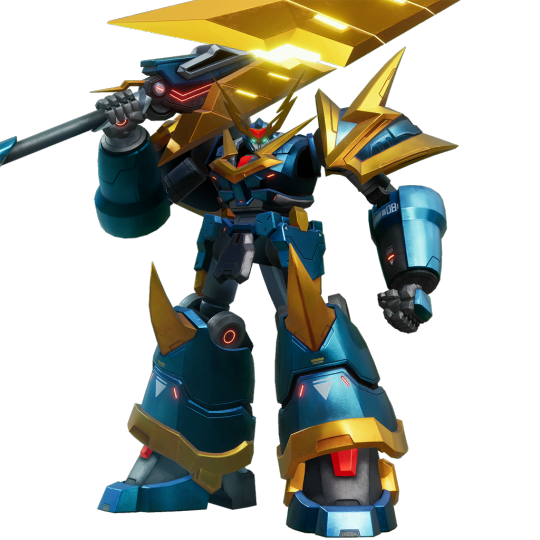
Thundatross is the tank of the roster, being super slow but hitting hard and most of his attacks have superarmor. He also has one move to close distance and a long range move. Skilled Thundatross players are the bane of my existence.
Design
Thundatross takes pretty heavy inspiration from mecha anime, so things like Getter Robo, Megazord, Big O and whatnot.
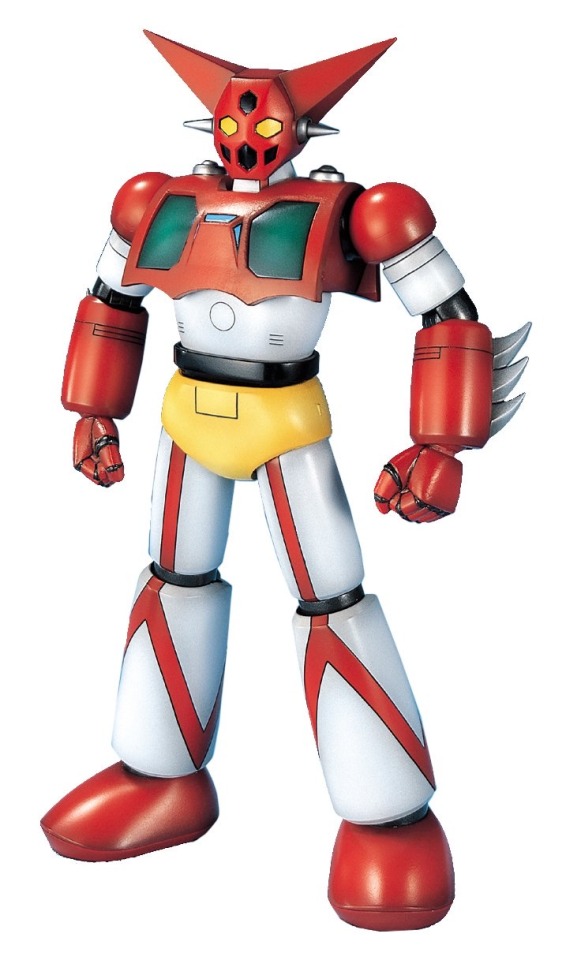


The primary reference is apparently Mazinger Z.
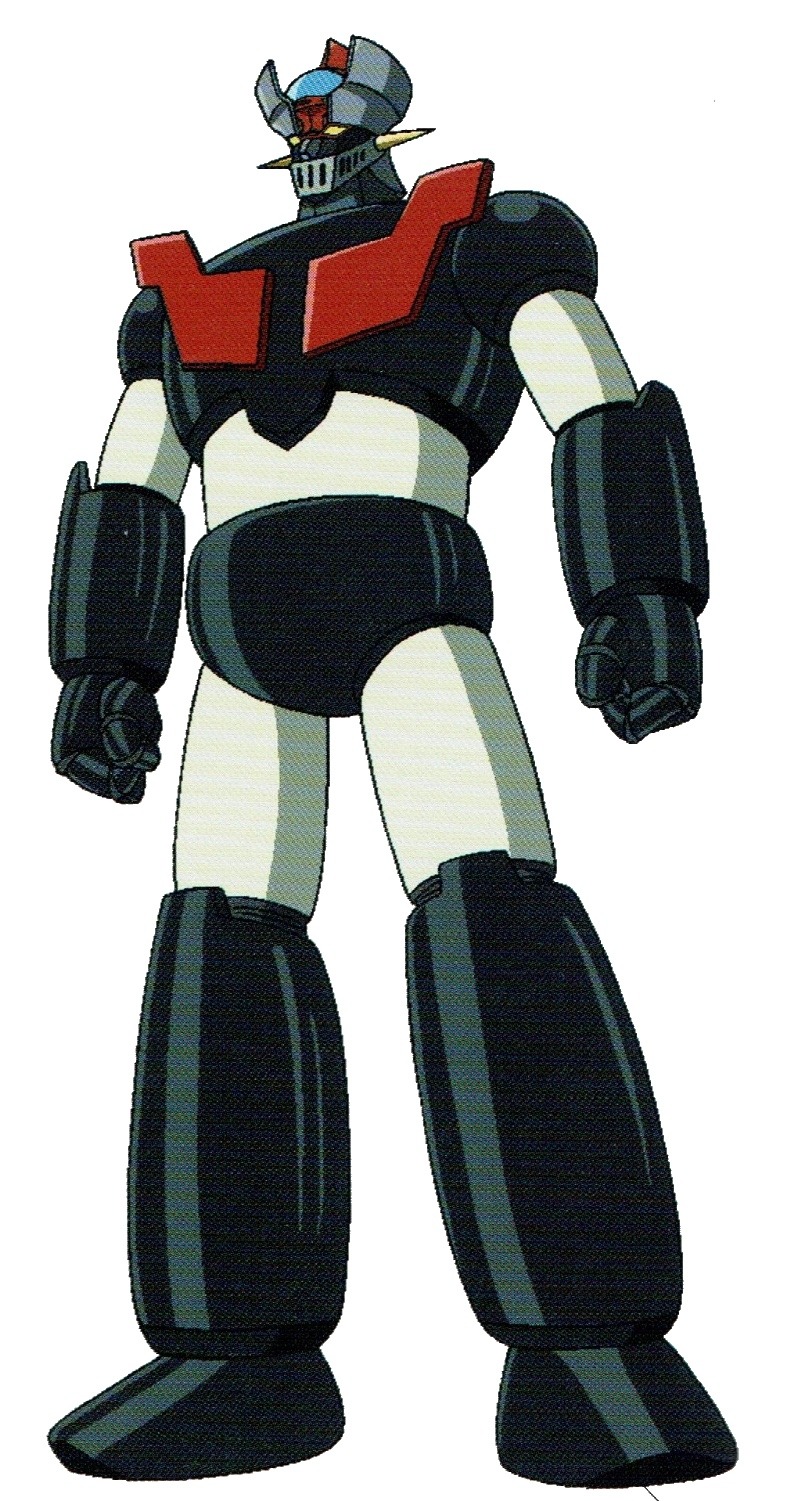
Unfortunately I can’t really find any concept art of Thundatross, just these snippets from their “behind the scenes” video.


As a personal aside, the only thing I really dislike about the design is the simple ball joints. Over six months of playing nothing but Armored Core 6 has spoiled me. But aside from that I’m a huge fan of Thundatross’s design.
Lore
Thundatross is the long term project of OtamaTEC, a megacorperation that began as a start up in 1991 by scientific genius and entrepreneur Dr. Otama Kazuo and later aided by Dr. Reiner (mentioned in Pipijuras’s overview) who eventually became second in command. The company was founded on the idea of the Gigatron Reactor I mentioned in Woolley’s overview, and their main goal is Giga Energy research and anti-kaiju defense, which resulted in many deals with the Global Titan Defense Initiative, primarily in Titan Containment Energy Barriers. The same barriers in the first level of Gorogong’s story! Despite this, a big source of the company’s income actually comes from the numerous high quality household electronics and computer parts they manufacture.
Their various findings on Giga Energy are covered in Thundatross’s profile documents, which also show that the project that created Thundatross is called the Tactical Reactor-Operated Security System.
Giga Energy can be free flowing; just hanging around in the air. But it can also come in a solid form, or at least be contained in a solid object: Giga Crystals. Giga Crystals are so densely packed with mass and energy that one that can fit in the palm of your hand can weigh up to 30 pounds and provide more energy than a full sized nuclear reactor. Giga Energy can also alter the atomic bonds and chemical structures of objects, and has very noticeable effects on organic life. A half eaten pear regrew some of its eaten parts and grew in size after a few hours of exposure to a Giga Crystal, but this seems to not be consistent as this doesn’t happen to any humans. It’s almost like Giga Energy is selective. It’s also hypothesized that the kaiju in Gigabash’s world use this process to transform into an S-class.
At some point during this time Dr. Otama Kazuo would get married to a woman named Megumi, and almost 2 decades after would have a kid: a boy named Yuuki. But by 2013 it seems like Megumi died somehow.
As Dr. Reiner helped with project T.R.O.S.S. things went along exceptionally well, and the mech outperformed initial expectations. Its system power output alone outperformed initial estimates by 543.85%, which just goes to show how powerful Giga Energy can be. However, as this project neared fruition, Kazuo began to grow worried. He was essentially creating a superweapon, and if someone were to use it for evil then the results could be disastrous. Another concern was Dr. Reiner, who was hellbent on destroying all kaiju and wanted to sell the blueprints to the GTDI even though they were too corrupt to use them responsibly.
Ultimately Kazuo installed an AI and security and identification system to the mech, and after troubling himself for years on how to find a pilot who could use Thundatross responsibly, he ultimately decided that he and any descendants should be the ones to pilot the machine, and so the mech will not start unless he or a descent is in the cockpit. He also had Yuuki name the mech Thundatross as a bit of family bonding. He really does try to be a good dad.
Dr. Otama Kazuo would never get to pilot Thundatross however. In the beginning of Thundatross’s story mode, which begins in the hell year of 2020, right after the completion of Thundatross, Rohanna would attack the Kimura district. The place of OtamaTEC HQ. Falling debris would fall onto Kazuo and paralyze him from the waist down, so Yuuki ended up taking the mantle. And for an entire year afterward this would actually go quite well! Yuuki is a good kid, if a bit impatient at times, so he was perfectly happy to lend a helping hand.
Without Kazuo to run the company, Dr. Reiner took charge, and he took advantage of this. He secretly constructed a second Thundatross and kept the second half of Pipijuras’s teleporter. When Yuuki retrieves Gorogong’s giant Giga Crystal that OtamaTEC commissioned the GTDI to retrieve with the help of Gigaman (who I’ll eventually cover), he hooks it up to the teleporter and opens up a portal to the hollow earth. He then gets into his “Unit 02” and goes through. However, Dr. Reiner wasn’t able to build his mech without Kazuo’s security system, so to get around this he basically kidnaps Yuuki’s dad and straps him into the cockpit.

The rest of the story mode is Yuuki and Gigaman finding a way into the hollow earth to find Reiner, stop him, and rescue Kazuo. They confront him at the Giga Core where he tells him that he plans to use both mechs to drain the Giga Core of its Giga Energy and starve all kaiju on the planet, which Gigaman points out would destabilize it and potentially blow up the planet. Dr. Reiner however, is so hellbent on kaiju elimination that he doesn’t care if he’d destroy the world, and to stop him Yuuki and Thundatross have to fight him in an epic climactic battle, with Gigaman giving Yuuki one last extra push to succeed and save his dad. The whole thing is very anime, it’s great.

Afterwards they kinda just leave Dr. Reiner in the wreck of his mech to starve to death in the hollow earth, which is kinda fucked up??
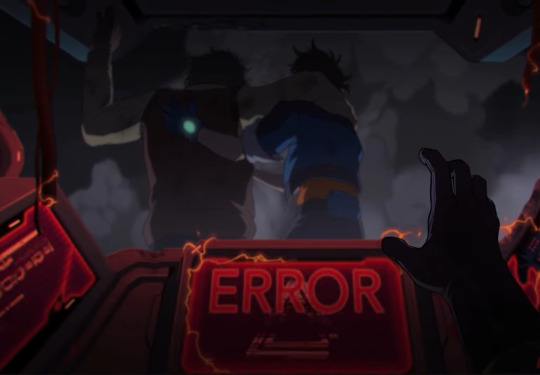
Also the devs confirmed that this story mode is the closest to a “canon” one.
In summary, Thundatross is an excellently executed anime mech with a cool story mode, and it’s a great addition to Gigabash. It also reveals many interesting things about Giga Energy.
10 notes
·
View notes
Text
Obsidian And RTX AI PCs For Advanced Large Language Model
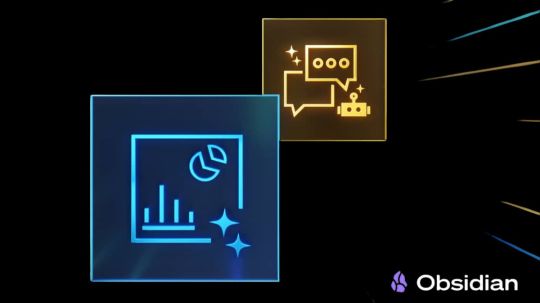
How to Utilize Obsidian‘s Generative AI Tools. Two plug-ins created by the community demonstrate how RTX AI PCs can support large language models for the next generation of app developers.
Obsidian Meaning
Obsidian is a note-taking and personal knowledge base program that works with Markdown files. Users may create internal linkages for notes using it, and they can see the relationships as a graph. It is intended to assist users in flexible, non-linearly structuring and organizing their ideas and information. Commercial licenses are available for purchase, however personal usage of the program is free.
Obsidian Features
Electron is the foundation of Obsidian. It is a cross-platform program that works on mobile operating systems like iOS and Android in addition to Windows, Linux, and macOS. The program does not have a web-based version. By installing plugins and themes, users may expand the functionality of Obsidian across all platforms by integrating it with other tools or adding new capabilities.
Obsidian distinguishes between community plugins, which are submitted by users and made available as open-source software via GitHub, and core plugins, which are made available and maintained by the Obsidian team. A calendar widget and a task board in the Kanban style are two examples of community plugins. The software comes with more than 200 community-made themes.
Every new note in Obsidian creates a new text document, and all of the documents are searchable inside the app. Obsidian works with a folder of text documents. Obsidian generates an interactive graph that illustrates the connections between notes and permits internal connectivity between notes. While Markdown is used to accomplish text formatting in Obsidian, Obsidian offers quick previewing of produced content.
Generative AI Tools In Obsidian
A group of AI aficionados is exploring with methods to incorporate the potent technology into standard productivity practices as generative AI develops and speeds up industry.
Community plug-in-supporting applications empower users to investigate the ways in which large language models (LLMs) might improve a range of activities. Users using RTX AI PCs may easily incorporate local LLMs by employing local inference servers that are powered by the NVIDIA RTX-accelerated llama.cpp software library.
It previously examined how consumers might maximize their online surfing experience by using Leo AI in the Brave web browser. Today, it examine Obsidian, a well-known writing and note-taking tool that uses the Markdown markup language and is helpful for managing intricate and connected records for many projects. Several of the community-developed plug-ins that add functionality to the app allow users to connect Obsidian to a local inferencing server, such as LM Studio or Ollama.
To connect Obsidian to LM Studio, just select the “Developer” button on the left panel, load any downloaded model, enable the CORS toggle, and click “Start.” This will enable LM Studio’s local server capabilities. Because the plug-ins will need this information to connect, make a note of the chat completion URL from the “Developer” log console (“http://localhost:1234/v1/chat/completions” by default).
Next, visit the “Settings” tab after launching Obsidian. After selecting “Community plug-ins,” choose “Browse.” Although there are a number of LLM-related community plug-ins, Text Generator and Smart Connections are two well-liked choices.
For creating notes and summaries on a study subject, for example, Text Generator is useful in an Obsidian vault.
Asking queries about the contents of an Obsidian vault, such the solution to a trivia question that was stored years ago, is made easier using Smart Connections.
Open the Text Generator settings, choose “Custom” under “Provider profile,” and then enter the whole URL in the “Endpoint” section. After turning on the plug-in, adjust the settings for Smart Connections. For the model platform, choose “Custom Local (OpenAI Format)” from the options panel on the right side of the screen. Next, as they appear in LM Studio, type the model name (for example, “gemma-2-27b-instruct”) and the URL into the corresponding fields.
The plug-ins will work when the fields are completed. If users are interested in what’s going on on the local server side, the LM Studio user interface will also display recorded activities.
Transforming Workflows With Obsidian AI Plug-Ins
Consider a scenario where a user want to organize a trip to the made-up city of Lunar City and come up with suggestions for things to do there. “What to Do in Lunar City” would be the title of the new note that the user would begin. A few more instructions must be included in the query submitted to the LLM in order to direct the results, since Lunar City is not an actual location. The model will create a list of things to do while traveling if you click the Text Generator plug-in button.
Obsidian will ask LM Studio to provide a response using the Text Generator plug-in, and LM Studio will then execute the Gemma 2 27B model. The model can rapidly provide a list of tasks if the user’s machine has RTX GPU acceleration.
Or let’s say that years later, the user’s buddy is visiting Lunar City and is looking for a place to dine. Although the user may not be able to recall the names of the restaurants they visited, they can review the notes in their vault Obsidian‘s word for a collection of notes to see whether they have any written notes.
A user may ask inquiries about their vault of notes and other material using the Smart Connections plug-in instead of going through all of the notes by hand. In order to help with the process, the plug-in retrieves pertinent information from the user’s notes and responds to the request using the same LM Studio server. The plug-in uses a method known as retrieval-augmented generation to do this.
Although these are entertaining examples, users may see the true advantages and enhancements in daily productivity after experimenting with these features for a while. Two examples of how community developers and AI fans are using AI to enhance their PC experiences are Obsidian plug-ins.
Thousands of open-source models are available for developers to include into their Windows programs using NVIDIA GeForce RTX technology.
Read more on Govindhtech.com
#Obsidian#RTXAIPCs#LLM#LargeLanguageModel#AI#GenerativeAI#NVIDIARTX#LMStudio#RTXGPU#News#Technews#Technology#Technologynews#Technologytrends#govindhtech
3 notes
·
View notes
Text
A Rising Tide of E-Waste, Worsened by AI, Threatens Our Health, Environment, and Economy

The digital age has ushered in a wave of innovation and convenience, powered in large part by artificial intelligence (AI). From AI-driven virtual assistants to smart home devices, technology has made life easier for millions. But beneath this rapid progress lies a less glamorous truth: a mounting crisis of electronic waste (e-waste).
The global e-waste problem is already enormous, with millions of tons discarded every year. Now, with the rapid growth of AI, this tide of e-waste is swelling even faster. Let’s break this down to understand the full scope of the issue and what can be done to mitigate it.
What Is E-Waste, and Why Should We Care?
E-waste encompasses discarded electronic devices — everything from old mobile phones and laptops to smart home gadgets, electric toothbrushes, and even large appliances like refrigerators. It’s not just junk; it’s an environmental and health hazard in disguise.
Each device contains a cocktail of valuable materials like gold and silver, but also toxic substances like lead, mercury, cadmium, and flame retardants. When improperly disposed of, these toxins leach into the environment, harming ecosystems and human health.
A Problem of Global Proportions
Annual Generation: The world generates over 50 million metric tons of e-waste annually, and this figure is projected to grow by 2 million tons each year.
Recycling Rates: Only 17% of e-waste is formally recycled. The rest? It ends up in landfills, incinerated, or handled by informal recycling sectors in developing nations.

While we’re busy marveling at AI-driven innovations, the discarded byproducts of our tech obsession are quietly poisoning our planet.
The Role of AI in Escalating E-Waste
AI, often lauded as the backbone of modern technology, is inadvertently exacerbating the e-waste crisis. Let’s examine the key ways AI contributes to this issue:
1. Accelerating Product Obsolescence
AI-powered devices are evolving at an astonishing pace. Smartphones with AI-enhanced cameras and processors, smart TVs with AI voice assistants, and wearables with health-tracking AI have become must-haves.
But these devices are often rendered obsolete within a few years due to:
Frequent Software Updates: AI systems improve rapidly, making older hardware incompatible with newer software.
Limited Repairability: Many modern gadgets are designed in a way that discourages repairs — sealed batteries, proprietary parts, and inaccessible interiors push consumers toward replacing rather than fixing.
Consumer Demand for New Features: AI advancements create a “fear of missing out” (FOMO), prompting consumers to upgrade frequently.
2. Proliferation of AI-Specific Hardware
AI-driven technologies require specialized, powerful hardware. Graphics Processing Units (GPUs), Tensor Processing Units (TPUs), and custom AI chips are integral to devices and data centers. Unlike general-purpose electronics, these components are challenging to recycle due to their complexity.
3. Growing Data Center Infrastructure

AI thrives on data, which means a relentless demand for computational power. Data centers, the backbone of AI, are:
Upgrading Constantly: To keep up with AI’s demands, servers are frequently replaced, generating massive amounts of e-waste.
Consuming Energy: Outdated hardware contributes to inefficiency and waste.
The Consequences of the E-Waste Crisis
The consequences of unmanaged e-waste are vast, impacting not only the environment but also human health and economic stability.
Health Hazards
E-waste releases harmful substances, including:
Lead and Cadmium: Found in circuit boards, these cause neurological damage and kidney issues when absorbed by humans.
Mercury: Found in screens and lighting, it can lead to brain damage and developmental issues, especially in children.
Burning Plastics: Informal recycling often involves burning e-waste, releasing carcinogenic dioxins into the air.
These pollutants disproportionately affect workers in informal recycling industries, often in developing countries with lax regulations.
Environmental Devastation
Soil Contamination: Toxic metals seep into the ground, affecting agriculture and entering the food chain.
Water Pollution: E-waste dumped in waterways contaminates drinking water and harms aquatic life.
Air Pollution: Incinerating e-waste produces greenhouse gases, contributing to climate change.
Economic Loss
Ironically, e-waste is a treasure trove of valuable materials like gold, silver, and rare earth elements. In 2019 alone, the value of discarded e-waste was estimated at $62.5 billion — higher than the GDP of many countries. Yet, due to poor recycling infrastructure, most of this wealth is wasted.
Turning the Tide: Solutions to the E-Waste Crisis

For Tech Companies
Design for Longevity: Adopt modular designs that make repairs and upgrades easy. For example, Fairphone and Framework Laptop are already doing this.
Reduce Planned Obsolescence: Commit to longer software support and avoid locking critical components like batteries.
Improve Recycling Systems: Implement take-back programs and closed-loop recycling processes to recover valuable materials.
For Governments
Enforce Right-to-Repair Laws: Legislation that mandates access to repair manuals and spare parts empowers consumers to fix devices instead of discarding them.
Promote Circular Economy Models: Incentivize businesses to design products for reuse, repair, and recycling.
Ban Hazardous E-Waste Exports: Prevent the dumping of e-waste in developing countries, where improper recycling leads to environmental and human rights violations.
For Consumers
Think Before You Upgrade: Do you really need the latest gadget, or can your current one suffice?
Repair Instead of Replace: Support local repair shops or DIY fixes with the help of online resources.
Recycle Responsibly: Look for certified e-waste recycling programs in your area.

Can AI Help Solve the Problem It Created?
Interestingly, AI itself could be part of the solution. Here’s how:
Optimizing Recycling Processes: AI-powered robots can sort e-waste more efficiently, separating valuable materials from toxins.
Predicting E-Waste Trends: AI can analyze data to anticipate where e-waste generation is highest, helping governments and companies prepare better recycling strategies.
Sustainable Product Design: AI can assist engineers in designing eco-friendly devices with recyclable components.
A Call to Action
The e-waste crisis is a ticking time bomb, exacerbated by the rapid rise of AI and our insatiable appetite for new technology. But the solution lies in our hands. By embracing sustainable practices, holding companies accountable, and making conscious choices as consumers, we can ensure that the benefits of AI don’t come at the cost of our planet.
It’s time to act, because a rising tide of e-waste doesn’t just threaten the environment — it threatens our future.
#technology#artificial intelligence#tech news#ai#e waste#economy#environment#nature#beautiful planet
2 notes
·
View notes